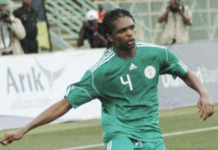Football odds are a critical element of sports betting at keonhacai, serving as the foundation upon which bettors make their decisions. The phrase Football Odds – Providing 100% Standard Odds in the Market underscores the importance of accuracy, fairness, and transparency in how these odds are calculated and presented. Ensuring that odds reflect true probabilities helps maintain integrity in the betting industry, builds trust among bettors, and fosters a competitive market where both bookmakers and punters can thrive.
In this comprehensive guide, we will explore the intricacies of football odds, delve into what it means to provide standard odds aligned with the real probabilities, and analyze how the market operates to ensure fairness. We will discuss various types of odds, the factors influencing them, and strategies to interpret and leverage odds effectively. Whether you’re a seasoned bettor or new to football betting, understanding these elements is essential for making informed choices and maximizing your chances of success.
Understanding Football Odds: The Foundation of Betting Markets

Before diving into the specifics of providing standard odds, it’s imperative to grasp what football odds are, how they function, and why they matter. Odds represent the likelihood of an event occurring, translated into a numerical format that determines potential payouts.
In the betting market, odds serve multiple purposes:
- They indicate the probability assigned by bookmakers to a specific outcome.
- They determine how much a bettor can win relative to their stake.
- They help balance the bookmaker’s risk across different outcomes.
The Concept of True Probability and Bookmakers’ Margins
At the core of kèo bóng đá odds lies the concept of true probability—the actual chance of an event happening based on data, analysis, and expert judgment. However, bookmakers rarely offer odds that mirror these true probabilities exactly. Instead, they incorporate a margin—often called the overround—that ensures profitability regardless of the event outcome.
Bookmakers’ Margins and Their Impact
The margin added by bookmakers creates a situation where the sum of implied probabilities exceeds 100%. This excess, known as the ‘vig’ or ‘juice,’ is how bookmakers secure their profit. For example, if a match has two possible outcomes, the implied probabilities might sum to 105%, indicating a 5% margin.
Understanding these margins is crucial because they affect the fairness of odds and the bettor’s expected value. A market with minimal margins provides a closer approximation to 100% standard odds, whereas larger margins favor the bookmaker at the expense of the bettor.
Types of Odds Formats
Odds come in various formats, each suitable for different regions and bettor preferences:
- Decimal Odds: Commonly used in Europe, Australia, and Canada, representing the total payout per unit staked.
- Fractional Odds: Popular in the UK, expressing profit relative to stake.
- Moneyline Odds: Predominant in the US, showing how much you need to wager to win $100 or how much you’d win on a $100 bet.
Regardless of the format, the underlying principle remains consistent: odds quantify the likelihood of an event and the potential payout.
How Accurate Are Bookmakers’ Odds?
The accuracy of football odds depends on several factors:
- The quality of data and analytics used.
- The speed and efficiency of the betting market.
- The bookmaker’s ability to adjust odds based on betting patterns and new information.
Market efficiency is a key aspect; highly efficient markets tend to produce odds that closely align with true probabilities, minimizing the bookmaker’s margin.
How Bookmakers Develop and Set Standard Odds
Providing 100% standard odds involves a meticulous process that combines statistical analysis, market knowledge, and real-time information updates. Bookmakers aim to set odds that accurately reflect the true probabilities of outcomes while maintaining profitability through margins.
Data Collection and Statistical Modeling
The first step in developing standard odds is comprehensive data collection. This includes historical match data, player statistics, team form, injury reports, weather conditions, and referee information. Advanced models incorporate machine learning algorithms and predictive analytics to estimate the likelihood of specific results.
By analyzing historical data and current trends, bookmakers can generate initial odds that approximate true probabilities. These models are continuously refined as new information becomes available, ensuring the odds stay relevant and accurate.
Adjusting for Market Dynamics and Betting Patterns
Once the initial odds are set, bookmakers monitor betting activity closely. Large bets or shifts in public sentiment may influence how odds are adjusted to balance their books. The goal is to attract bets on all outcomes evenly, minimizing risk exposure.
In addition, bookmakers incorporate their margins to ensure profitability, meaning the odds offered might be slightly less favorable than the pure statistical estimate. To achieve standard odds that are fair and accurate, adjustments are made carefully, considering both data-driven insights and market behavior.
The Role of Expert Judgment and Insider Information
While data is paramount, experienced traders and analysts contribute valuable insights that enhance the odds-setting process. They interpret nuanced factors like team morale, tactical changes, or off-field issues, which might not be captured by quantitative models alone.
In high-profile matches, insider information, such as last-minute injuries or tactical shifts, can significantly impact odds. Skilled bookmakers incorporate such intelligence swiftly to update odds, thereby maintaining their alignment with actual probabilities.
Transparency and Regulatory Standards
Some jurisdictions impose regulations requiring bookmakers to display their odds calculation methods, promoting transparency and fairness. This helps ensure that the odds are not manipulated unfairly and that they truly reflect the underlying probabilities. Adhering to regulatory standards reinforces the credibility of the standard odds provided in the market.
Finalizing and Publishing Odds
The culmination of data analysis, market monitoring, and expert insights results in the final odds published for betting. These odds are designed to be competitive, fair, and reflective of the most accurate estimate of event likelihood, embodying the principle of Football Odds – Providing 100% Standard Odds in the Market.
Factors Influencing Football Odds: Variables That Shape the Market
Football odds are dynamic and influenced by numerous variables. Recognizing these factors allows bettors to assess whether odds are fair and identify opportunities for strategic betting.
Team Performance and Form
A team’s recent performance heavily influences its perceived strength. Winning streaks, injury status, and overall consistency inform odds calculations. When a team is on a winning run or has key players returning, bookmakers adjust the odds to reflect this improved outlook.
Conversely, a string of losses or internal issues can diminish a team’s chances, prompting odds to shift accordingly. Understanding team dynamics is vital for interpreting whether the odds are justified or if they present value opportunities.
Head-to-Head Statistics and Historical Data
Historical encounters between teams provide insight into matchup-specific tendencies. Some teams have psychological edges or tactical advantages over others, which can influence the expected outcome.
Analyzing head-to-head records helps refine probability estimates and assess whether current odds accurately reflect these historical patterns. It also aids in spotting potential biases or mispricings in the market.
External Conditions: Weather and Venue
External factors such as weather conditions, pitch quality, and venue familiarity impact gameplay and result probabilities. For instance, heavy rain or snow can favor defensive play or disrupt team strategies, affecting odds.
Home advantage is another significant consideration, as teams often perform better on familiar grounds with supportive crowds. Bookmakers account for these external conditions to fine-tune their odds, aiming for precise reflection of real-world scenarios.
Player Availability and Injuries
The presence or absence of key players dramatically influences a team’s chances. Injuries, suspensions, or tactical absences can weaken a team’s lineup, leading to adjustments in odds.
High-profile injuries tend to cause sharp shifts in odds, especially before kickoff. Bettors who monitor injury reports can exploit these movements to identify value bets that reflect the updated, more accurate probabilities.
Tactical and Strategic Factors
Coaching styles, team formations, and tactical approaches shape game outcomes significantly. Some teams excel in possession-based play, while others rely on counterattacks or set-pieces.
Bookmakers incorporate tactical considerations into their models, especially when analyzing teams known for specific styles. Anticipating strategic shifts or coaching changes can also be advantageous for bettors seeking to understand whether odds are realistically priced.
Market Sentiment and Public Biases
Public perception and betting trends influence odds, often creating discrepancies from true probabilities. Popular teams or high-profile matches tend to attract more bets, sometimes leading to inflated odds due to betting volume rather than actual chances.
Bookmakers actively manage these biases by adjusting odds to attract bets on underrepresented outcomes, striving for balanced books. Savvy bettors recognize when odds are skewed by market sentiment and seek out opportunities where the true probability differs from the crowd’s perception.
Strategies for Interpreting and Leveraging Football Odds
Understanding the principles behind Football Odds – Providing 100% Standard Odds in the Market enables bettors to develop strategies that maximize value and minimize risk.
Value Betting: Identifying Discrepancies
Value betting involves spotting situations where the implied probability from odds is lower than your assessed probability of an outcome. This requires thorough analysis and research to diverge from bookmaker estimations.
For example, if you believe a team has a higher chance of winning than the odds suggest, placing a bet can yield a positive expected value over time. Consistently finding value bets is a cornerstone strategy for successful betting.
Arbitrage Opportunities
Arbitrage betting exploits discrepancies in odds across different bookmakers. By placing bets on all possible outcomes with various providers, a bettor guarantees a profit regardless of the result.
This practice hinges on the availability of standard odds that accurately reflect true probabilities. The more efficient the market and the closer the odds are to the real probabilities, the fewer arbitrage opportunities exist. Nonetheless, when identified, they offer a low-risk profit avenue.
Monitoring Market Movements
Tracking how odds fluctuate leading up to a match provides insights into market sentiment and potential information leaks. Sharp moves often indicate insider knowledge or significant developments like injuries.
By observing these movements, bettors can act swiftly to capitalize on emerging value or avoid bets that have become less favorable. Developing tools and routines for real-time monitoring enhances decision-making.
Using Statistical Models and Data Analysis
Leveraging advanced models that incorporate historical data, team stats, and external factors improves the accuracy of your probability assessments. Comparing your estimated probabilities with bookmaker odds helps identify mispricings.
Building or utilizing existing predictive models allows for systematic evaluation rather than relying solely on intuition, aligning with the concept of providing standard odds that genuinely reflect market realities.
Managing Bankroll and Betting Psychology
Smart bankroll management ensures sustainability and reduces the risk of ruin. Recognizing that even well-informed bets can lose emphasizes the importance of discipline.
Maintaining objectivity, avoiding emotional betting, and sticking to well-researched strategies grounded in standard odds foster long-term success.
Conclusion
Ensuring Football Odds – Providing 100% Standard Odds in the Market is fundamental for a fair, transparent, and efficient betting environment. From sophisticated data modeling and continuous market adjustments to understanding external influences and bettor psychology, the process aims to mirror the true probabilities of football events as closely as possible. Recognizing the factors that influence odds, developing sound strategies for interpretation, and appreciating the importance of fairness not only enhance the betting experience but also uphold the integrity of the sport and gambling industry alike. Ultimately, navigating the complexities of football odds with informed insight leads to smarter betting decisions and greater enjoyment of the beautiful game.




